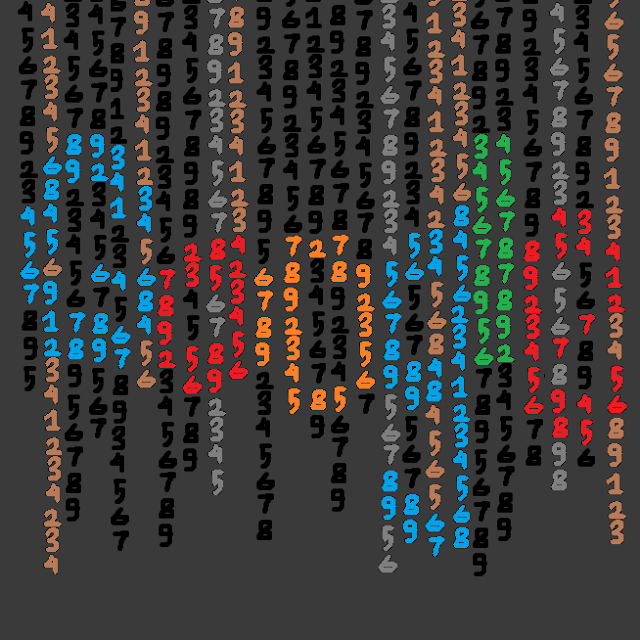How Governments Spy On Protestors Using AI—And How To Avoid It - Blog No. 78
In the age of smartphones, drones, and big data, protesting isn’t just about showing up with a sign anymore. Today, marching in the streets means stepping into a digital battlefield where every move you make could be tracked, analyzed—and used against you.
Behind this invisible wall of surveillance?
Artificial Intelligence (AI) is the unseen force reshaping the very nature of protest and resistance.
If you’ve ever wondered how governments spy on protestors using AI—and, more importantly, how you can protect yourself—this guide will open your eyes.
The Silent Watcher: How AI Powers Protest Surveillance
Picture yourself at a protest. Thousands of people around you, a sea of energy.
Above, a small drone buzzes. Streetlights blink, seemingly normal—yet inside, hidden cameras use facial recognition AI to scan the crowd.
As revealed in this insightful YouTube video, today's governments aren't just observing protests—they're digitizing and dissecting them with machine precision.
Here's how AI supercharges surveillance:
-
Facial recognition software identifies people in real-time.
-
Drone footage is processed by machine learning to flag "unusual" behavior.
-
Social media scraping AI maps protest movements online.
-
Predictive policing algorithms attempt to forecast where protests will happen and who might lead them.
This isn’t just Big Brother watching—it’s Big Brother predicting your next move.
Real Stories: Surveillance in Action
In Hong Kong’s 2019 pro-democracy uprisings, protestors faced sophisticated AI surveillance. Lampposts equipped with facial recognition cameras captured demonstrators’ faces, leading to arrests long after protests ended. Protestors adapted by wearing masks, pointing lasers at cameras, and even dismantling surveillance poles.
Similarly, during the 2020 Black Lives Matter protests in the United States, police departments deployed drones and monitored Instagram live streams, identifying organizers days later through automated license plate readers and phone metadata.
You might think blending into a crowd keeps you safe.
AI makes the crowd transparent.
The Technologies Governments Use to Spy on Protestors
Governments worldwide have built a high-tech arsenal to monitor dissent. Here’s a breakdown of the primary tools:
-
Facial Recognition AI: Matches your face to a database in seconds.
-
Cell-Site Simulators (Stingrays): Impersonate cell towers to intercept calls, texts, and locations.
-
Drone Surveillance: AI-analyzed drone footage tracks movement patterns.
-
Social Media Monitoring: AI bots scrape public and private platforms for protest-related content.
-
Predictive Policing Algorithms: Machine learning predicts where protests may occur and who might attend.
Each tool by itself is powerful. Together, they create a detailed map of your actions—sometimes even before you make them.
Why Governments Use AI Against Protestors
Why invest so heavily in surveillance?
Because controlling information is controlling power.
Governments use AI surveillance to:
-
Deter participation: Fear of being tracked keeps many would-be protestors at home.
-
Preemptively disrupt movements: Arresting leaders before protests swell.
-
Gather intelligence: Identifying networks, connections, and future threats.
-
Manipulate narratives: Using collected data to discredit protestors.
In short, AI surveillance transforms public resistance into personal risk.
How To Protect Yourself from AI Surveillance at Protests
You don't have to be powerless. Activists around the globe have developed creative countermeasures.
Here’s how to fight back:
🔥 Quick Reference Table: How to Counter AI Surveillance
| AI Surveillance Method | How It Works | How To Avoid / Counter It |
|---|---|---|
| Facial Recognition | Identifies individuals by matching faces to databases | Wear masks, sunglasses, hats; use anti-facial-recognition makeup |
| Cell-Site Simulators (Stingrays) | Tricks phones into connecting to fake towers, revealing calls and location | Leave primary phone at home; use burner phones; disable biometrics |
| Drone Surveillance | Monitors crowd behavior and movement from the sky | Stay under cover (trees, structures); use umbrellas; avoid open clustering |
| Social Media Scraping | Collects protest-related posts, live videos, and metadata | Use encrypted apps (e.g., Signal); avoid posting real-time protest content |
| Predictive Policing Algorithms | Predicts protest locations and potential leaders based on digital patterns | Keep planning private; use code words; avoid predictable online behavior |
| License Plate Readers & Car Tracking | Scans and logs car plates at protest locations | Use public transit, rideshares (with precautions), or park far from events |
1. Cover Your Face and Distort Your Profile
Simple masks aren’t enough anymore. Governments deploy AI systems trained to recognize you from eyes, ears, and even the way you walk (called gait recognition).
Tips:
-
Use hats, sunglasses, scarves.
-
Anti-surveillance makeup (patterns that confuse facial recognition) works too.
-
Hide identifying tattoos, jewelry, and clothing logos.
2. Ditch Your Main Phone
Your phone is a tracking device. Even in airplane mode, it can reveal your location via metadata.
Tips:
-
Bring a burner phone purchased anonymously.
-
Disable fingerprint and facial unlock features.
-
Use encrypted apps like Signal for messaging.
-
Turn off Bluetooth and Wi-Fi when not needed.
3. Stay Off the Grid Socially
Posting a selfie at the protest?
You’re handing surveillance agencies the evidence they need.
Tips:
-
Avoid real-time posting.
-
Strip metadata from photos (apps like "ObscuraCam" help).
-
Use VPNs to hide your IP address.
4. Outsmart the Drones
If you spot a drone, assume you’re being recorded—and analyzed.
Tips:
-
Use umbrellas for cover.
-
Stay near tall buildings or under trees.
-
Keep moving unpredictably to confuse pattern recognition AI.
5. Practice Good OPSEC (Operational Security)
Security isn’t just about technology—it’s about habits.
Tips:
-
Plan protests face-to-face if possible.
-
Share information on a need-to-know basis.
-
Assume everything said online is monitored.
Good OPSEC could mean the difference between successful activism and unwanted attention.
Future Trends: The AI Surveillance Arms Race
AI surveillance tools aren’t static—they’re evolving fast.
Emerging threats include:
-
Emotion Recognition AI: Systems claiming to detect anger, fear, or intent through facial expressions.
-
Predictive Disruption Algorithms: AI models that predict—and automatically suppress—protests before they start.
-
Automated Legal Actions: Systems that generate warrants or fines based purely on AI-driven "evidence."
As technology grows, so must our countermeasures. The arms race is already here.
The Global Resistance: Fighting Back Against Surveillance
Around the world, activists, technologists, and even some lawmakers are pushing back.
-
In Hong Kong, protestors used reflective material to jam facial recognition.
-
In San Francisco, facial recognition tech was banned for city agencies.
-
In France, citizens are protesting against AI-powered surveillance laws.
-
Privacy advocacy groups like EFF (Electronic Frontier Foundation) offer free resources and encryption tools.
Change is possible—but it requires awareness, solidarity, and continuous adaptation.
Conclusion: Stay Smart, Stay Safe, Stay Free
Protesting has always carried risks. But in today’s AI-enhanced world, the risks have become digital, silent, and often invisible—until it’s too late.
AI surveillance at protests isn’t just about watching you; it's about knowing you—your connections, your habits, your weaknesses.
It turns activism into a risky game of chess against an opponent who never sleeps.
But knowledge is power.
By understanding how AI surveillance works—and learning how to counter it—you reclaim some of that power.
Protest smartly. Protect your privacy. Defend your freedom.
Because the fight for justice now includes a fight for your digital self.



Comments
Post a Comment